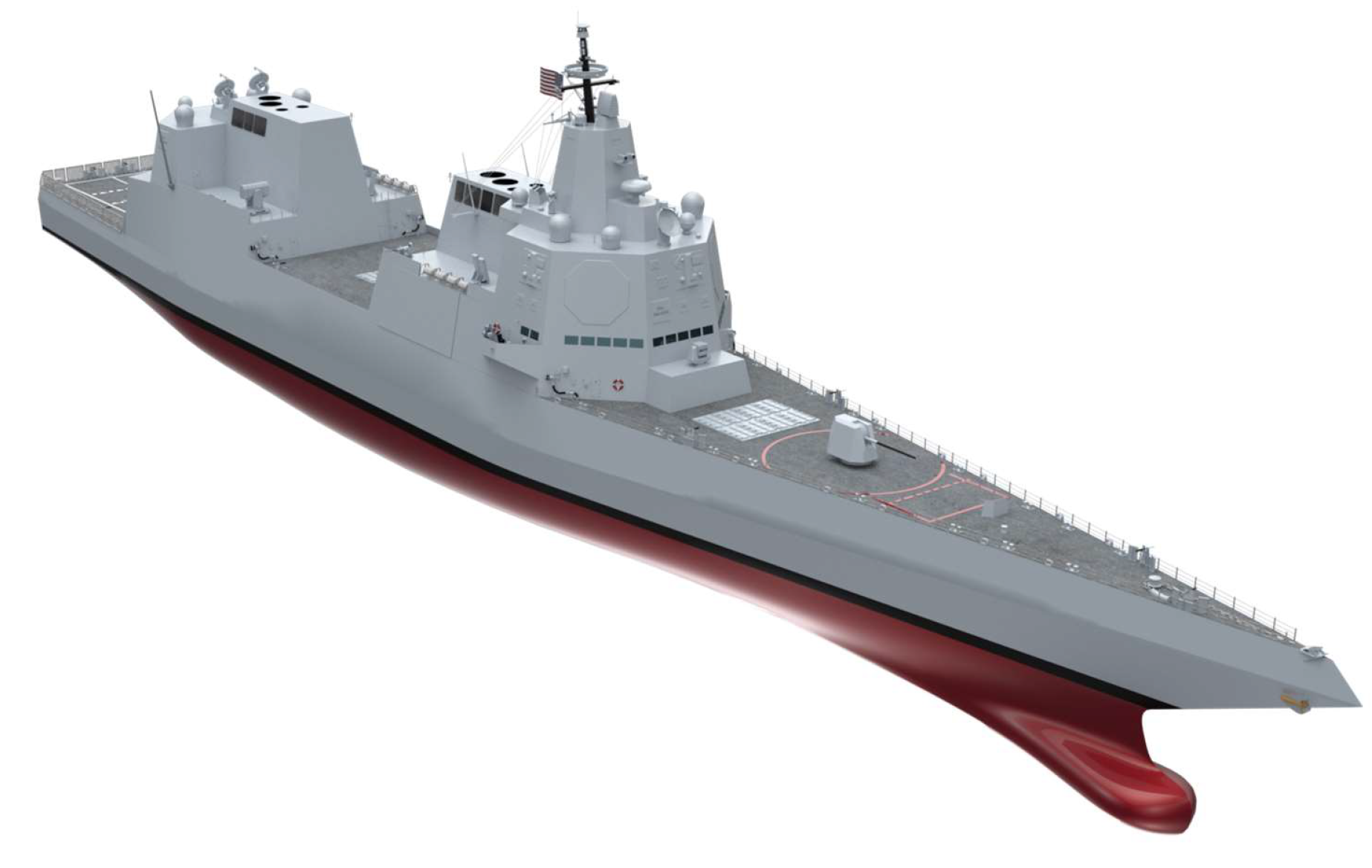
The push to develop the Navy’s next-generation destroyer will be a team effort between General Dynamics Bath Iron Works and HII’s Ingalls Shipbuilding if the Navy and the Senate Armed Services Committee have their way.
Instead of competing for the primary contract to build DDG(X), the service wants the two yards to take a page from the teaming agreement between General Dynamics Electric Boat and HII’s Newport News Shipbuilding to design and construct the Columbia-class nuclear ballistic missile, several legislative and service officials told USNI News this week.
On Monday, the Senate Armed Services released its Fiscal Year 2023 authorization bill, which includes language that directs the Navy to pursue the teaming agreement for DDG(X) without naming Ingalls and Bath. But the Navy wants the arrangement for those two shipyards, USNI News understands.
Citing a string of problems with the Navy’s surface ship programs over the last 20 years, the bill’s report language directs the Navy to adopt a similar teaming plan to the submarine yards.
“The committee notes that many recent Navy shipbuilding programs, including the DDG-1000 and Littoral Combat Ship programs, experienced significant cost increases, program delays, and reliability issues due to flaws in the earliest acquisition strategies,” according to the report language paired with the bill that was filed on Monday.
“Accordingly, the committee believes it is critical that the Navy work closely with industry to ensure appropriate design and technical maturity in developing lead ship acquisition strategies. The committee further believes that the DDG(X) acquisition strategy should be modeled on and leverage the best practices of the Columbia-class Integrated Product and Process Development (IPPD) contract, with integrated lines of effort in design, technology maturation, and construction.”
For Columbia, the IPPD construct centers on a digital design tool that allows both yards and the Navy to work from the same set of plans simultaneously to increase the design efficiency and identify production problems ahead of fabrication. While in the submarine teaming agreement Newport News and Electric Boat build different sections of the same boat, in the DDG(X) arrangement, each yard would build a complete warship, USNI News understands.
The advantage would alleviate the growing pains of bringing a second yard in to build the same design after an original award, since all the yards would craft their fabrication plans at the same time. However, the arrangement would limit the work to the two yards and prevent a wider competition for other shipyards beyond Ingalls and Bath, USNI News understands. Some legislators are skeptical of the lack of a wider contest, Hill sources have told USNI News.
The House did not include a similar provision in its version of the NDAA that was approved earlier this month.
The next-generation destroyer is set to follow the Arleigh Burke-class guided-missile destroyer and Ticonderoga-class guided-missile cruiser, an effort the Navy has attempted since the 2000s.
At the time, the Burkes and Ticos were going to be superseded by the Zumwalt-class guided-missile destroyer and a massive 20,000-ton next-generation cruiser called CG(X). CG(X) was canceled for cost and the Zumwalts were trimmed to just three as part of the Fiscal Year 2010 defense budget.
Since then, the Navy has restarted the Burke line between Ingalls and Bath and adapted the hull to accommodate what would become the AN/SPY-6 air and missile defense radar in the Flight III configuration. Cementing a strategy for a Burke successor has been elusive.
The most recent strategy, unveiled in January, would take the combat system from the Flight III and the integrated propulsion system from the Zumwalts to create a combination that would be designed to field hypersonic missiles and high-powered directed energy weapons, Navy officials said at the time.
“When we upgraded the Flight III … we took up all of the service life allowance on that platform. All of the space, weight and power has all been allocated. There is not enough room on that ship to put a new combat capability that takes more power or a larger footprint within the ship,” deputy DDG(X) program manager Katherine Connelly said at the time.
“The first ship will focus on a new hull form and a new integrated power system. We will use the proven combat system from the Flight III ship so we are designing the ship with the flexibility and the margins to accommodate the future of the Navy and the needs for where we’re going.”





